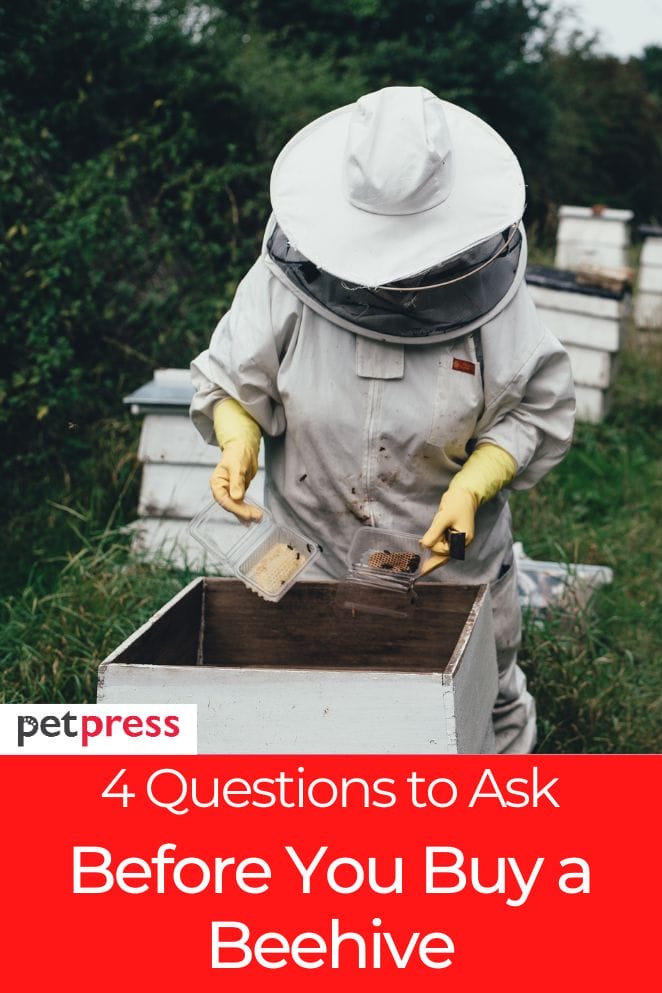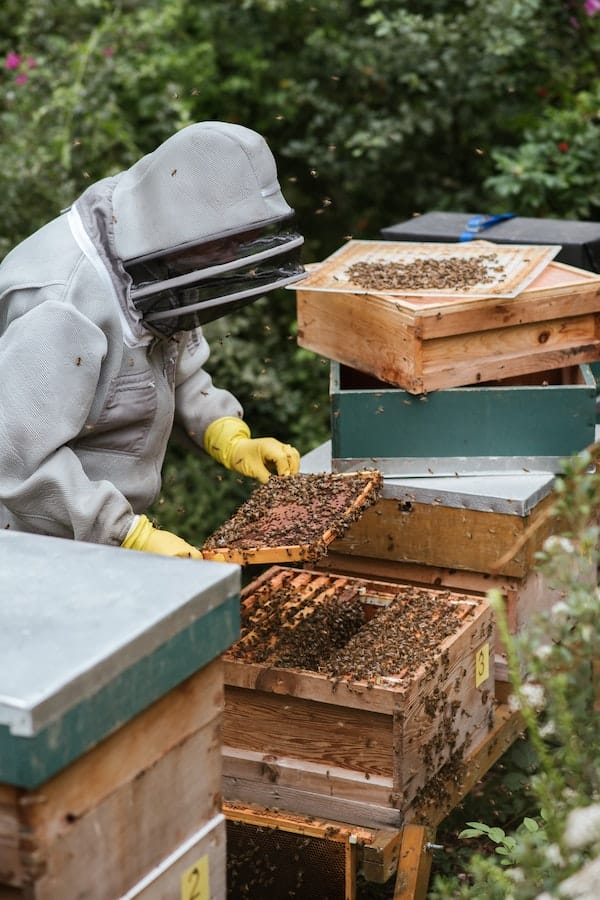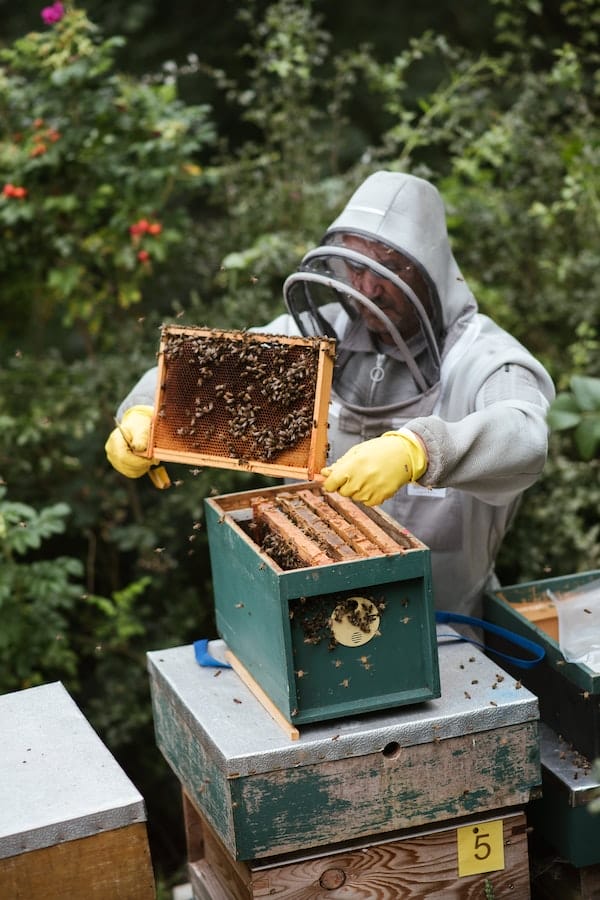
Purchasing a beehive can be an exciting and rewarding experience.
Whether you’re getting started with beekeeping or looking to add new colonies to your existing hives, there are some important questions that you should ask before buying a beehive.
From the size of the hive and its construction materials to the number of frames and the type of bees you’ll be raising, these questions will help you make an informed decision about the beehive that’s right for your beekeeping needs.
Read on to learn more about what to consider before buying a beehive.
What questions should you ask before buying a beehive?

There are several questions that you should consider before buying a beehive. These include:
Question #1: What size beehive should you buy?
When choosing a beehive, size is an important factor to consider.
The size of the hive will determine how many frames and boxes your bees can occupy and the number of colonies you can eventually have in your apiary.
Smaller hives are also easier to manage as they require less time for maintenance and inspections.
That said, larger hives can support more bee colonies and are generally more efficient for honey production.
Before purchasing a beehive, consider the size that will best suit your goals as a beekeeper.
Question #2: What type of construction materials should you look for?
When selecting a beehive, it’s important to consider the type of construction materials used.
The ideal material should be durable and weatherproof, as well as safe for your bees.
Common materials include wood, plastic, and metal. Wood is the traditional choice for hives but can require more maintenance over time due to weathering.
Plastic and metal hives offer a more durable solution but may require additional insulation for the bees during cold months.
Be sure to select appropriate materials for your climate and beekeeping needs.
Question #3: How many frames should you look for?
When shopping for a beehive, you should consider the number of frames it comes with.
Each frame contains individual cells and honeycomb that will serve as the foundation for your bees to build upon.
The more frames your hive has, the more space your colony will have to expand its home. Generally speaking, hives come with 10-14 frames.
The number of frames you choose to buy should be based on the size of your colony and the type of beekeeping you plan to do.
Question #4: What type of bees should you consider?
When selecting a beehive, it’s important to think about the type of bees you want to raise.
Different species of bees require different hive environments and management strategies.
Some bees are better suited for colder climates, while others thrive in warmer temperatures.
Consider what type of bee you plan on keeping before purchasing a beehive, as some hives may not be suitable for certain species.
Additionally, consider the behavior of bees and how it will affect your beekeeping management plan. With some research, you can find the perfect beehive for your needs.
- Related post: A Complete List of The Best Bee Names
- Related post: 10+ Interesting Bee Facts That Will Amaze You
Some other facts about beehives

There are several facts that you should know before buying, including:
The cost of equipment
The cost of equipment to buy a beehive can vary depending on the type of hive, materials used, and size.
Generally, a complete set-up with frames, boxes, and other components can range from $100 to $300 or more.
If you plan on purchasing secondhand items, you may find them for much less.
Additionally, you can also build your beehive with easily obtainable materials. This is a great way to save money while getting the exact type of hive you need.
The maintenance of a beehive
Maintaining a beehive requires some effort and knowledge.
Routine inspections should be done to ensure the health of your bees and check for any signs of disease.
Seasonal preparation will also need to be done, such as winterizing your hive or providing additional insulation during colder months.
Additionally, you may need to purchase supplies like sugar water for feeding or wax for creating new frames.
All these factors should be considered when selecting your beehive and deciding how much time you will devote to keeping bees.
The laws surrounding beekeeping
Before starting a beekeeping operation, make sure to check the local laws and regulations in your area.
Different states have different restrictions on what types of beekeeping you can do and where hives can be located.
Additionally, it’s important to research any permits that may be required for your operation.
These regulations are put in place to protect both the bees and the public, so make sure to understand them before starting a hive.
The number of colonies a hive can house
The number of colonies a beehive can house depends on the size and type of hive.
Generally speaking, most hives are designed to hold one colony, although larger hives may have enough space to accommodate multiple colonies.
You should also consider the type of bee you plan on keeping, as some species require more space than others.
Additionally, the size of your colony will determine how much space is needed to house them comfortably.
When selecting a beehive, ensure it can handle the number of colonies you plan on having.
The potential risks associated with beekeeping.
Beekeeping can be a rewarding experience, but there are some potential risks that you should be aware of.
Risk factors include stings, the spread of disease, and exposure to chemicals.
Additionally, if not managed properly, wild bees may become attracted to your hive and parasitize your colony.
To reduce the risk of harm, make sure to wear protective clothing when handling bees, inspect your hive regularly for signs of disease, and practice responsible beekeeping techniques.
Taking the proper precautions can help ensure you and your bees stay safe.
Conclusion

Beekeeping can be a rewarding and educational experience, but it is important to have the right supplies and know the laws in your area.
Additionally, there are many factors to consider when selecting a hive, such as cost, maintenance requirements, the number of colonies it can house, and potential risks associated with beekeeping.
Taking these points into consideration will help you find the beehive that best meets your needs and ensure a successful and safe beekeeping experience.


GIPHY App Key not set. Please check settings